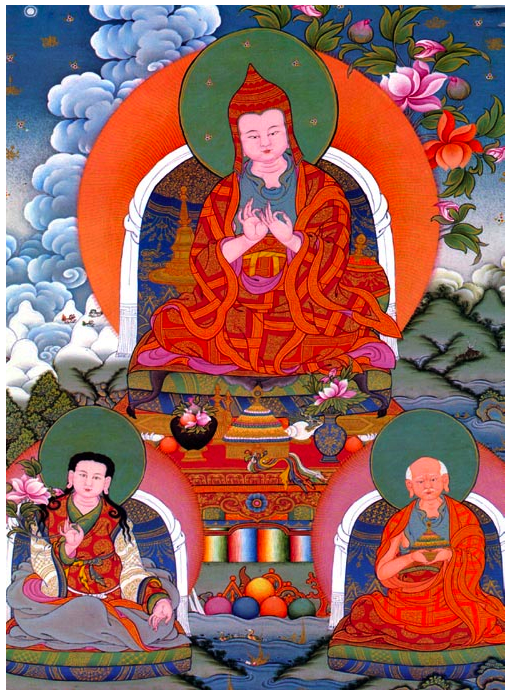Today, my staff was having a rough time. We’ve had miscommunications, drama, ups and downs. Seemingly mostly downs, lately.
You know how you have those quiet, calm, peaceful stretches—and you’re like, you know? I think I’ve grown up a bit.
This hasn’t been one of those stretches for me. I’ve been reactive. Defensive. I’ve tried–and failed. Today I even tried to help, and only made things (a little) worse. I definitely didn’t help, much.
The solution, often, is to talk and listen and learn. The solution, often, is also to:
Do what the Buddhists do: exactly the opposite of what my ego wants to do. ~ Waylon, ed.
Via my mom, Linda Lewis:
“My bad.”
Simple Buddhist technique transforms both work culture & relationships:
Lojong 12, “Drive All Blames into One.”
Perhaps the most challenging and provocative of Atisha’s slogans is Drive All Blames into One. Why in the world would anyone want to do such a thing? Who wants to invite blame?
Sometimes it is difficult enough to take the blame for something we actually did, like reaching for honey in the grocery store and accidentally knocking a glass jar of peanut butter off the shelf and onto the floor. Are we the kind of person who walks away, hoping no one saw or heard the glass break? Or are we the more responsible person who looks around for the grocer to tell what a messy puddle we’ve made in aisle two?
When we see our own or others’ defense mechanism shun blame, we also see self-cherishing and ego-fixation. Yet every life situation—domestic, occupational, or political—is an opportunity to be both brave and kind, when blame is being bounced around like a volleyball.
Obviously, it’s good to be responsible for our own mishaps. But being able to accept complaint and blame—even when unjustified—is actually a sign that we are not only aspiring to the Bodhisattva path, but that we are entering it.
As a Bodhisattva in progress, why in the world would we want to lay emotional or aggressive blame on anyone else? Having changed our attitude to put others first, we see that the blame-game just spreads aggression and neurosis like sticky peanut butter all over the home or workplace. If we have begun to develop genuine compassion through the combination of meditation and tonglen, we do more than attempt to refrain from doing harm; we wish to alleviate the tension and paranoia existing in other people by taking the criticism and blame.
Interestingly, this simplifies the situation. It clears the air so that everyone can have a fresh, clear view. When we take on the blame, which Chogyam Trungpa Rinpoche called just a “paper tiger”, everyone can begin to communicate because the defensive, uptight mood has dissolved. And this might surprise and relieve the individual or individuals who were the actual cause of the problem. They may or may not admit some wrongdoing – but that is not the point. The point is to relieve a tense situation in order to move forward together. This makes both household and organizations move smoothly.
I remember many years ago, one of my best bosses called me into his office. This was a rare occurrence and I felt a bit nervous, thinking that I must have made some kind of error. And indeed I had, but my boss introduced the issue saying,
“Linda, you’ve been doing a good job, working independently, and I am to blame for not giving you enough guidance.”
By his taking on the blame for what I had actually done, I felt totally motivated to acknowledge what I’d done incorrectly, and to proceed, more aware of how to do things properly. I felt part of a friendly team, working together. His taking on the unnecessary blame, rather than dishing it out, was so skillful, a clear enactment of what Trungpa Rinpoche advised:
“Absorb the poison—then the rest of the situation becomes medicine.”
We can do this if we are genuine practitioners, if we have glimpsed the fact that mind clings to a self when there is none. If we are daily touching in with spacious mind, we remember this truth of selflessness, and find post-meditation that we can lean into the sharp edges of blame. At first we might recognize when we cower; that is still awareness kicking-in. Gradually we begin to accommodate a bit of blame. This reverses our habitual tendency to complain or feel immobilized in those black-air confrontations and meetings.
This does not mean that we should admit to a felony or crime, which we have not committed. This slogan is not an invitation to martyrdom. Nor does this slogan imply that we should never speak up if we see something destructive occurring. It is not complaint if we are speaking up and acting in order to warn others of danger. But then the concern is not me-centered, it’s focused on the larger picture.
With the willingness to “Drive All Blames into One”, we begin to create a more enlightened home, work-place, and perhaps even a more enlightened civilization—just through being fearless enough to embrace paper tigers with open arms.
~
Bonus:
 Share on bsky
Share on bsky


Read 14 comments and reply